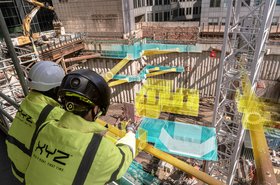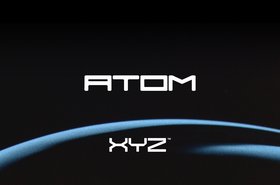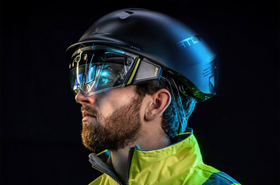The global Augmented Reality (AR) market is projected to reach $88.4 billion by 2026, and the next few years will be some of the most impressive ones we’ve seen for AR so far.
Mostly used by consumers across the gaming, entertainment, news, social media, education, and shopping sectors, we are now seeing it breakthrough into other industries, such as construction and engineering, particularly for data centers.
There’s no doubt this technology has advanced considerably over the past five years. In a short time, innovative methods have dramatically evolved from the original simple overlays used on a portable device, to an engineering tool driving efficiency and precision across the field.
The accuracy of these early solutions left a lot to be desired, and the simple visual aids failed to deliver solutions fit for construction purposes. Engineering-grade AR, developed specifically with the industry in mind, is now taking this technology to another level.
Considerable research and development, as well as a better understanding of the specific requirements of mission critical construction, is realizing the potential of this powerful technology for building data centers; making on-site work safer, smarter and more efficient.
Understanding the sector
We begin our journey with 3D digital designs, such as BIM, delivered by architects and engineers, so why are these digital models then converted to analogue processes on-site and perceived within 2D drawings?
Until now, the industry has missed the digitalization of physical on-site construction. Fundamentally, building the physical asset from 2D drawings opens the door to misinterpretation leading to errors, increased wastage and heightened risks. There is also the risk of version control which means any outdated design changes, such as changes made upstream, fail to make their way down to the on-site teams.
AR enables and empowers construction workers to view 3D design models on-site, right before their eyes, as if they were actually in the model. This enables the user to truly comprehend where certain aspects will be once they are built and visualize the digital design as it was truly intended.
But, before we get ahead of ourselves, these digital platforms and devices must be designed with the needs of the end-user and environment in mind.
All too often, we see technology developed and then imposed upon an industry without a proper understanding of specific requirements.
Having spent over a decade on-site and working as a digital construction manager on some of Europe’s largest projects including many hyper-scale data centers, I found this was often the case with solutions that my team and I used.
Designed to make life easier, invariably they made it more difficult. Getting the technology right is no easy feat, and its development needs to be approached with a sector-first attitude.
So, when I founded XYZ Reality in 2017, it was crucial that the products and services we were bringing to market had construction-specific needs at their core. That's why we developed our Engineering-grade AR headset, ‘The Atom’.
Making the technology relatable
Construction sites, especially on mission critical projects, are often extremely busy and involve long, laborious days, which require those on-site to stay alert and aware of their surroundings. Therefore, it’s important when bringing AR into this environment it enhances the user's experience and awareness.
There’s a lot of unnecessary complexity which often accompanies ConTech implementation, and I’ve seen it hamper the adoption of potentially useful tools. So, designing for simplicity is crucial. With any new technology, it’s important for people to get familiar and comfortable using it, and to understand its advantages as quickly as possible.
This simplicity is also important to keep health and safety at the heart of any device. Good design means fewer distractions, protecting workers in an environment where full concentration is non-negotiable. Hardhats must be penetration-resistant, shock-absorbent, water and fire-resistant and easy to use. Thus, ensuring an AR headset is built with construction protocols and safety in mind is crucial
For instance, the Atom’s headset has been built with this in mind and is BSI/ANSI certified for hardhat impact, penetration and visor optical protection.
We’ve also delivered a built-in safety check, so those using the headset can undertake a health & safety risk assessment specific to their site. To ensure users are aware of their surroundings and avoid any potential hazards on-site, they can always see their feet. The headset is also equipped with an AR emergency shut off feature which allows the user to turn off the AR overlay instantly should it be necessary or in the event of a safety hazard.
In addition, to avoid unnecessary disruptions to work, the Atom uses hot-swappable internal battery modules, allowing the user to experience an all-day lifespan by swapping them in/out.
Addressing the pain points
For AR to be indispensable to those within the construction industry, it must directly enhance the users’ ability to deliver efficiency and productivity gains and, of course, increase quality in real-time.
Around 30 percent of the work performed by construction companies is actually rework. Essentially, rework kills productivity and can steal months from projects, leading to budget overruns and missed deadlines.
As you can imagine, on time sensitive projects like data centers, this can cause a significant headache for contractors, labourers, owners, and architects. But it can, in fact, be avoided.
However, with AR we have a unique opportunity to identify, track and fix errors, before they even happen, changing the way we work, for good.
With Augmented Reality, designers, construction teams, project managers and architects can save time and money, while eliminating the need for rework due to the ability to take a more proactive approach and deliver enhanced insights.
What was once a major pain point for the industry can now become a thing of the past, getting data centers online, on time and within budget.
Mission accomplished
AR has come on in leaps and bounds since its early predecessors and has risen up the ranks to become an invaluable tool for contemporary construction.
From eliminating rework and mistakes to offering invaluable insight, it can break down silos that exist in industry today and streamline the entire project lifecycle.
We’re already witnessing the transformative effects of our work in engineering-grade AR on mission critical projects, delivering cost and time savings, and arming construction teams with the tools they need to proactively tackle data center builds across the UK, Ireland, US, Denmark and Sweden.
As the technology becomes more widely adopted across industry it will drive efficiency, accuracy, reduce waste and improve the safety and reliability of construction projects. A future where all builders are building from holograms is not so far away.
More from XYZ Reality
-

Augmented reality for data center construction
Engineering grade augmented reality headsets could make the construction process more reliable
-

Sponsored XYZ Reality: Transforming critical construction with Augmented Reality
See what the experts had to say about The Atom, the AR headset with millimetre accurate positioning on data center projects
-

Sponsored XYZ Reality launches pioneering new Augmented Reality technology to transform mission critical construction
Ground-breaking Augmented Reality company unveils next-gen AR headset, The Atom, for-millimetre accurate positioning on data centre projects, setting its sights on global expansion

